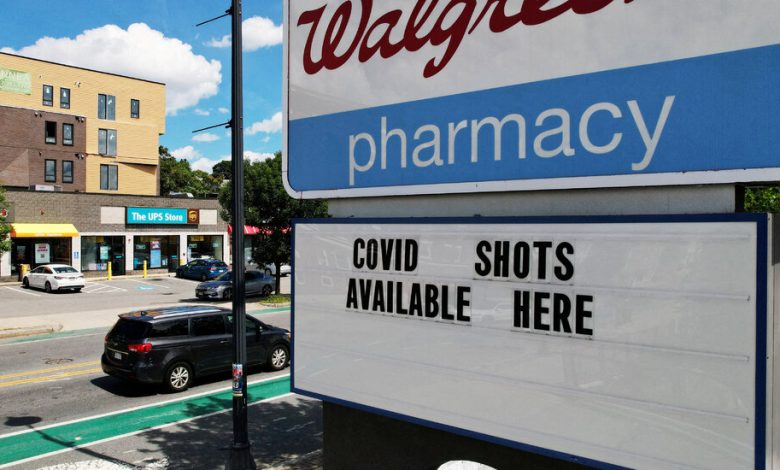Few Americans Have Gotten the New Covid Shots, C.D.C. Finds

The News
Few Americans have opted to be immunized against the coronavirus so far this fall: Just over 7 percent of adults and 2 percent of children had received a Covid-19 vaccine as of Oct. 14, according to a survey presented on Thursday to scientific advisers to the Centers for Disease Control and Prevention.
The uptake is weak even among those most at risk of severe illness. Only one in five people age 75 or older has been vaccinated, along with about 15 percent of those ages 65 to 74, according to the survey of nearly 15,000 people.

Credit…Brian Snyder/Reuters
Why It Matters: Covid is still dangerous to some Americans.
More than 1,200 people are dying of Covid each week, according to C.D.C. data. “That’s a travesty,” said Dr. David Kimberlin, a pediatrician at the University of Alabama at Birmingham who represented the American Academy of Pediatrics at the meeting.
“It’s like an entire neighborhood being wiped out every single week,” Dr. Kimberlin added.
About 16,000 people were hospitalized with Covid in the week ending Oct. 14, compared with nearly 23,000 at the same time last year and more than 44,000 in 2021.
Covid hospitalizations among adults age 75 and older are two to three times as high as among those ages 65 to 74. Rates of hospitalization are highest among Native Americans, Alaska Natives and Black Americans.
Less than 1 percent of Native Americans and Alaska Natives, and 7.6 percent of Black Americans, had received the vaccine as of Oct. 14.
“I’m really disappointed in the low rates of vaccination, because I think it’s a major missed opportunity to improve our overall level of health,” said Dr. Camille Kotton, a physician at Massachusetts General Hospital and an adviser to the C.D.C.
Background: The vaccine rollout has been bumpy.
Most people should be able to get the vaccines at no cost through private health insurance, Medicare or Medicaid. Government programs also make the vaccines available for free to children and adults who are underinsured or uninsured, at least through Dec. 31, 2024.
So far, more than 380,000 doses have been administered to uninsured people at more than 24,000 pharmacies.
Still, many people have reported having trouble finding the vaccine at pharmacies, being charged fees or even mistakenly being turned away. At some pharmacies, demand has outstripped supply, leading to canceled appointments.
Dr. Kotton said her clinic and others had received doses of the vaccine only in the past couple of weeks, and she was cautiously optimistic that the immunization rates would pick up.
According to the Health and Human Services Department, 12 million Americans had been vaccinated by Oct. 14. That number grew to 14.8 million in the week after.
About 36 percent of adults age 75 and older in the survey said they would definitely get the shot, while 26 percent said they would probably do so or were still undecided.
Second Opinion: Younger people are less vulnerable.
Some experts have argued that immunity from previous infections and vaccinations is enough to protect most young people from severe illness and death from Covid.
The C.D.C. recommended on Sept. 12 that all Americans age 6 months and older receive at least one dose of the latest Covid shots. At the time, advisers to the agency were united in endorsing the vaccines for those at high risk because of their age, race or health status.
But a few advisers also expressed concern about recommending the shots to younger people, especially children, and young males at higher risk for myocarditis, an uncommon side effect. Relatively young and healthy people are at much lower risk of severe illness.
Still, in some patients, the virus can inflict long-term damage to the heart and other organs.
A Telling Number: Some Americans are just not interested.
About 38 percent of adults in the survey said they would not choose the vaccine for themselves. About the same percentage of parents said they would not have their children immunized.
“We can have the best vaccine in the world, we could have the best ability to access it in the world,” Dr. Kimberlin said, but if 40 percent of people say they don’t want it, he added, “it’s just going to sit on the shelf.”




